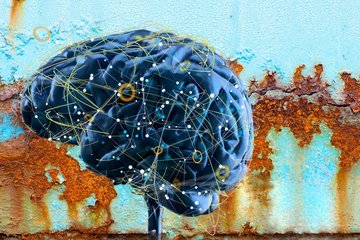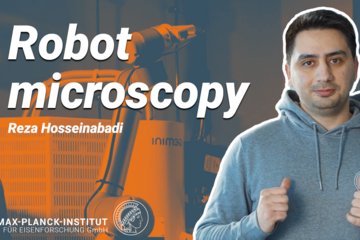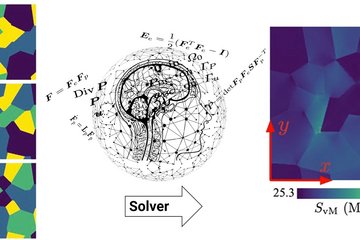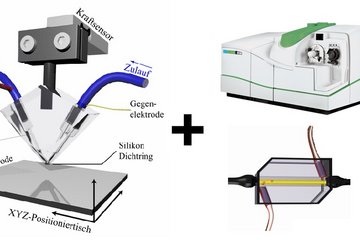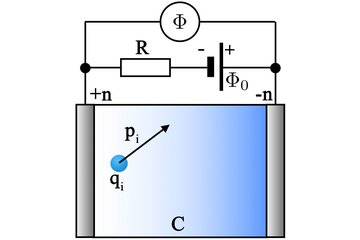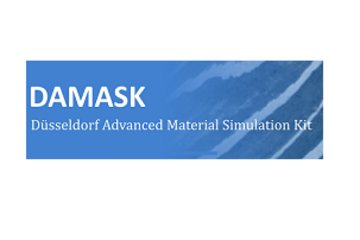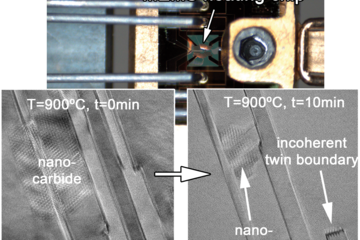All genres
81.
Journal Article
Correspondence Regarding the Article “On the Nature of the Evanescent Wave” (Appl. Spectrosc. 2013. 67[2]: 126-130). How “total” is Total Reflection from Powdered Samples? Applied Spectroscopy 67 (6), pp. 699 - 701 (2013)
82.
Journal Article
Incoherent dynamic light scattering by dilute dispersions of spherical particles: Wavelength-dependent dynamics. Physical Chemistry Chemical Physics 15, pp. 19143 - 19146 (2013)
83.
Journal Article
Simple synthesis of superparamagnetic magnetite nanoparticles as highly efficient contrast agent. Materials Letters 95, pp. 186 - 189 (2013)
84.
Journal Article
Third-order effects in resonant sum-frequency-generation signals at electrified metal/liquid interfaces. Journal of the Optical Society of America B-Optical Physics 30 (1), pp. 219 - 223 (2013)
85.
Journal Article
Activation and fluoride-assisted phosphating of aluminium silicon coated steel. ACS Applied Materials and Interfaces 5 (10), pp. 4224 - 4232 (2013)
86.
Journal Article
Nanostructured few-layer graphene with superior optical limiting properties fabricated by a catalytic steam etching process. Journal of Physical Chemistry C, 117 (22), pp. 11811 - 11817 (2013)
87.
Journal Article
Existence of a lower critical radius for incorporation of silica particles into zinc during electro-codeposition. ACS Applied Materials and Interfaces 4 (11), pp. 6221 - 6227 (2012)
88.
Journal Article
Monolayer formation of Octyltrimethoxysilane and 7 Octenyltrimethoxysilane on silicon(100) covered with native oxide. Applied Surface Science 258 (7), pp. 3191 - 3196 (2012)
89.
Journal Article
Investigation of native oxide growth on zinc in different atmospheres by spectroscopic ellipsometry. Physica Status Solidi A-Applications and Materials Science 209, pp. 846 - 853 (2012)
90.
Journal Article
Direct monophasic replacement of fatty acid by DMSA on SPION surface. Applied Surface Science 258, pp. 9685 - 9691 (2012)
91.
Journal Article
Incidence angle dependence of enhancement factor in attenuated total reflection surface enhanced infrared absorption spectroscopy studied by numerical solution of the vectorial Maxwell equations. Physical Chemistry Chemical Physics 14, pp. 14702 - 14709 (2012)
92.
Journal Article
Application of thin-film interference coatings in infrared reflection spectroscopy of organic samples in contact with thin metal films. Applied Optics 50 (9), pp. C301 - C308 (2011)
93.
Journal Article
Computation of surface-enhanced infrared absorption spectra of particles at a surface through the Finite Element Method. Journal of Physical Chemistry 115 (7), pp. 3025 - 3033 (2011)
94.
Journal Article
Enhancement of the electrocatalytic activity of gold nanoparticles towards methanol oxidation. Electrocatalysis 2 (2), pp. 106 - 113 (2011)
95.
Journal Article
Electrodeposition of zinc-silica composite coatings: Challenges in incorporating functionalized silica particles into a zinc matrix. Science and Technology of Advanced Materials 12 (5), 055005 (2011)
96.
Journal Article
Numerical analysis of Debye screening effect in electrode surface potential mapping by scanning electrochemical potential microscopy. Electrochemistry Communucations 12 (10), pp. 1391 - 1394 (2010)
97.
Journal Article
Numerical simulation of probing the electric double layer by scanning electrochemical potential microscopy. Electrochimica Acta 55 (18), pp. 5210 - 5222 (2010)
98.
Journal Article
Dielectric interlayers increasing the transparency of metal films for mid-infrared attenuated total reflection spectroscopy. Physical Chemistry Chemical Physics 12, pp. 14798 - 14803 (2010)
99.
Journal Article
Optical and electronic properties of native zinc oxide films on polycrystalline Zn. Phys. Chem. Chem. Phys. 12 (37), pp. 11467 - 11476 (2010)
100.
Book Chapter
Mechanisms of Inhibitor Action: Passivation and Self-Healing. In: Corrosion Inhibitors in the Oil and Gas Industries, Vol. Part 2, (Chapter 15), pp. 359 - 382 (Eds. Saji, V. S.; Umoren, S. A.). Wiley-VCH, Weinheim, Germany (2020)


